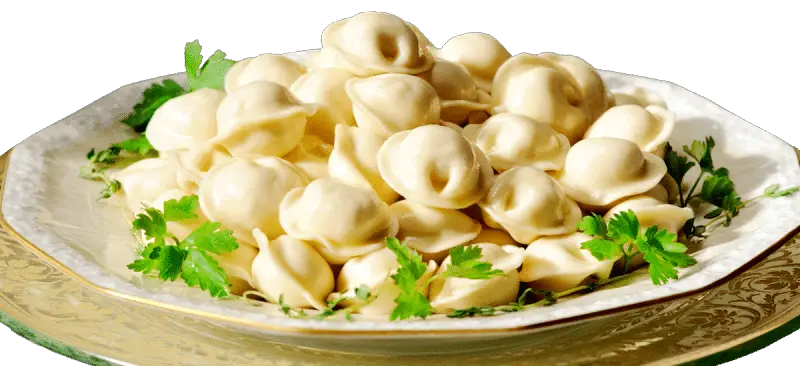Pelmeni (Пельмени) are Russian dumplings: small portions of ground meat and onion wrapped in a thin, unleavened dough and boiled.
While Russians prize pelmeni as a Siberian dish, “рецепт русских пельменей может на самом являться измененной версией китайских пельменей” (the recipe may actually be an adaptation of Chinese pot-stickers). Other ancient foods such as manti, native to Turkic peoples and also popular in Russia, differ from pelmeni only in size and shape. Ukranian vareniki, Eastern European pierogis and even Italian ravioli also have much in common with this simple, tasty food.
How It Got Its Name
(Почему они носят такое название?)
Most historians agree that Russian pelmeni originated in Siberia and were probably named by the “коми, коренной народностью Урала” (Komi, a people indigenous to the Urals). In the Komi language, “pelnyan” means “bread-ear,” a reference to the food’s ear-like shape. When the word crossed into Russian, it changed a bit (as most words crossing language barriers do) to “pelmen” (пельмен) whose proper plural in Russian is “pelmeni.” In English they are almost always referred to in the plural, perhaps because “почти невозможно съесть только лишь один из сочных маленьких кусочков” (it is nearly impossible to eat just one of the juicy morsels).
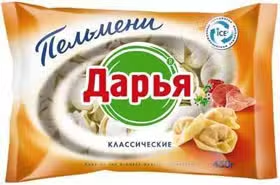
Families with small children often make “колдуны” (kolduny) as well as regular pelmeni. While pelmeni are often about the size of silver dollar, kolduny are usually not much larger than a nickel and have very thin shells. Thus, they are perfect for little mouths. Besides size, there is usually no other difference between them, but Russians will almost never call kolduny “pelmeni;” they are separate dishes. Interestingly, “колдун” in Russian also means “sorcerer.”
How and When to Eat Pelmeni
(Как правильно есть пельмени?)
Pelmeni were originally “пища охотников” (hunters’ food). Giant sacks of frozen pelmeni would be carried by Siberian hunters when leaving on winter expeditions (where they would stay frozen, of course). They would be “сварены в воде из растаявшего снега и часто их едят без всего или с мясным бульоном” (boiled in melted snow and often eaten plain or with broth when meat was available).
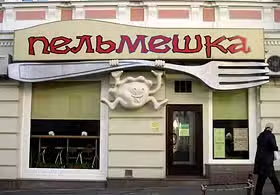
Pelmeni are traditionally made in very large batches in a long and tedious process. After so much work, preparation is followed by a large family meal of pelmeni, cucumber and tomato salad, fresh greens, and perhaps vodka or kvass (what could be more Russian?). Pelmeni can be “приправлены сметаной, майонезом, маслом, перцем, уксусом, почти любой другой приправой” (dressed with sour cream, mayonnaise, butter, pepper, vinegar, almost any other condiment). They can also “сервировать плавающими в мясном бульоне или даже в воде, в которой их варили” (be served floating in meat broth or even in the water in which they were boiled).
Pelmeni, while not exactly “street food,” can occasionally be found for sale in very simple cafes in Russian cities called simply “пельмени” or “пельменная.” Many of these actually date from Soviet times. There are also more trendy cafes such as “Пельмешка,” a chain of art-house cafes in Moscow that combine cafeteria-style pelmeni with movies and art displayed on the walls.
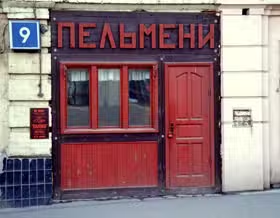
Pelmeni are also available in the freezer section of any Russian supermarket. They are a hearty meal that cooks quickly and easily, and even the cheaper brands tend to be quite tasty (although higher-end options such as the “У Палыча” brand are not to be missed). Traditional Russian housewives, meanwhile, consider it a question of honor to cook pelmeni from scratch. Thus, “купленные в магазине пельмени имеют репутацию “холостяцкой еды” в популярной культуре” (store-bought pelmeni have a reputation as “bachelor food” in popular culture).
How to Prepare Pelmeni
(Как правильно готовить пельмени?)
There is a saying in Russian that “пельмешки не терпят спешки.” Literally this means “pelmeni can’t tolerate speed demons.” The saying is used, however, in the general sense of “good things come to those who wait.”

Pelmeni are traditionally made in very large batches in a long and tedious process that can involve the entire family, including men, although the process is generally lead by the females. Preparation often involves “не один час раскатывания, нарезки, наполнения фаршем, сворачивания и скрепления кончиков” (hours of rolling, cutting, filling, folding, and pinching). This whole process is encompassed in Russian with the phrase “лепить пельмени” (to make/build/fashion/sculpt pelmeni). After cooking and eating many of them, many more are frozen for later use.
Of course, smaller batches can be made relatively quickly or one can “cheat” with a pelmeni mold. However, moving too fast will means that “тесто будет рваться в середине или не будет должным образом скрепляться на краях” (the dough will tear in the middle, or will not be properly sealed at the edges), leading to a sloppy and soggy dish.
Pelmeni are best made with fresh, whole beef, pork and diced onions run twice through a meat grinder. For those without a grinder, ground beef and ground pork may be purchased and mixed together. This mixture is called “домашний фарш” (“home ground”) in Russian and is available pre-made in most Russian supermarkets (and you are more likely to find this than plain ground beef). Home ground, mixed with finally chopped onion, is considered the most definitively Russian element of pelmeni. Don’t get it wrong.
To get the dough to right consistency, “нужно месить, пока оно не станет упругим и не перестанет быть липким” (it should be kneaded until elastic and no longer sticky). It should be rolled quite thin – which делает пельмени изящными (makes the pelmeni delicate) and allows the meat to cook quickly.
If you plan to store your pelmeni, freeze them uncooked. Especially when cooking frozen pelmeni, add a bit of vegetable oil to the water. Drop the pelmeni into warm water (not boiling) and stir them while they are still frozen until they all separate (and then stop stirring!). This will “не даст пельменям слипаться и распадаться” (keep the pelmeni from sticking together and tearing).
“Пельмени вкусны, и их вкус – это истинный вкус России!” (Pelmeni are tasty and a true taste of Russia!) Try them for yourself by the following the recipe below!
Great Pelmeni Recipes
(Давай приготовим!)
See below for a free recipe for pelmeni. See also the free videos online. If you are interested in cooking from Russia, Ukraine, Georgia, and other places in Eurasia, make sure to see our full, free Eurasian Cookbook online! You might also be interested in the following specialized cookbooks we’ve enjoyed:
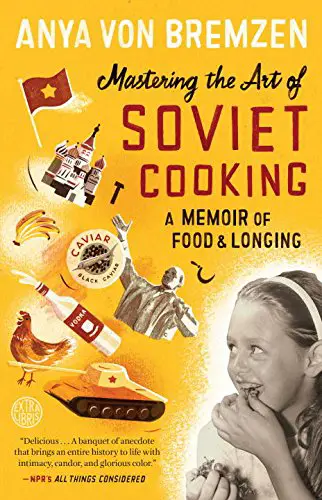 |
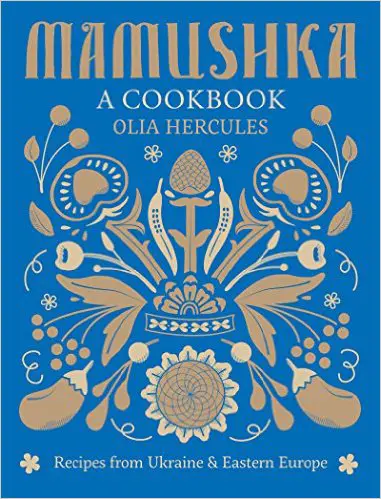 |
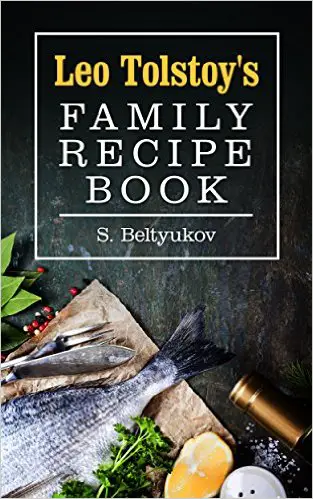 |
 |
| Русские пельмени | Russian Pelmeni |
Ингредиенты
Приготовление
|
Ingredients
Preparation
|
Our Favorite Pelmeni Videos
Commercially produced pelmeni are popular in Russia, so advertisements for them can be seen often.
Those that search for recipes to make them from scratch will find many videos offering words like “secret!” and “ideal!” Although the recipe is quite simple, getting the dough just right, so that it doesn’t stick, doesn’t break, and yet is fairly thinly stretched over the meat, is challenging. Here’s one fairly simple video:
https://www.youtube.com/watch?v=N9aS8jBaTS8
You Might Also Like
Olga here turns her attention to the modern Russian circus, describing what it is like to attend a contemporary performance, from the atmosphere inside the circus building to the acts that still draw enthusiastic audiences today. Written in simplified, modern Russian, her account offers a firsthand glimpse into how a traditional cultural institution continues to […] Russians have typically gotten nearly three weeks off a year just for holidays. This has changed in recent years and especially since the start of the war in Ukraine, as Russia has pushed for greater effeciency in its economy. While the long New Year holidays remain, most others are now more modest, with often with […] I originally titled this piece “Ghosts of Holidays Past,” way back in 2006. It was an early project I completed for SRAS, written after just three years with the company. Looking back nearly twenty years later, I can see the youthfulness in my writing. While the boundless optimism of that period has been tempered by […] In Russian, New Year is the major celebration of the year. Picture it as Christmas, New Year, and the Fourth of July combined. There are presents, decorated trees, a mythical bearded gift-giver, fireworks, toasts, food, and the grand New Year countdown celebrated at midnight – all associated with this one holiday. Russians are even typically […] Russia and Central Asia offer what can seem to be a bewildering selection of dairy products in their transnational food cultures. An area of special note, and often one of the strangest to Westerners, is the seemingly never-ending assortment of fermented milk drinks and products in the gastronomic repertoire. To cut down on the brow-furrowing […]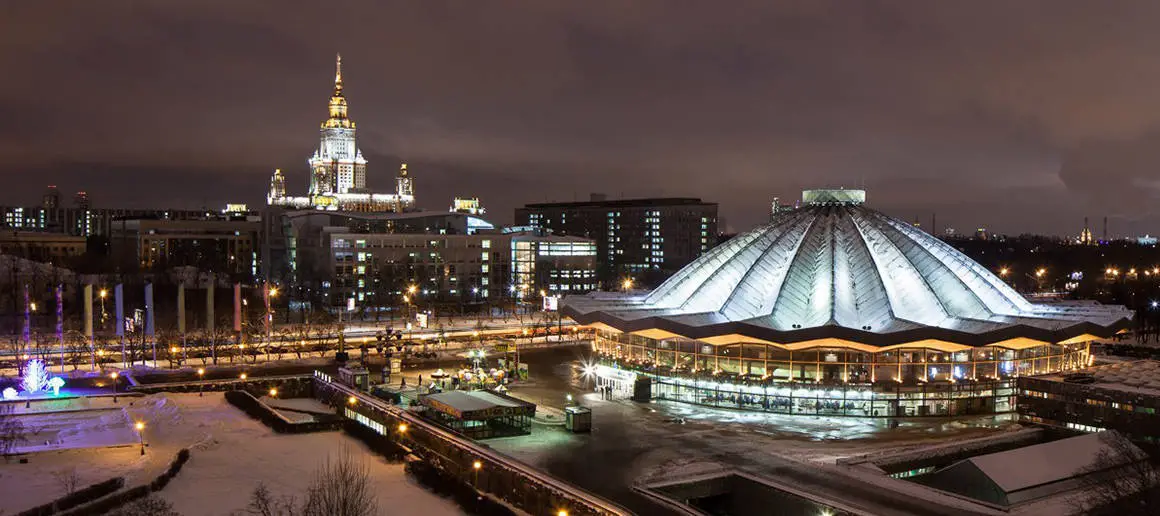
The Circus in Russia: Olga’s Blog
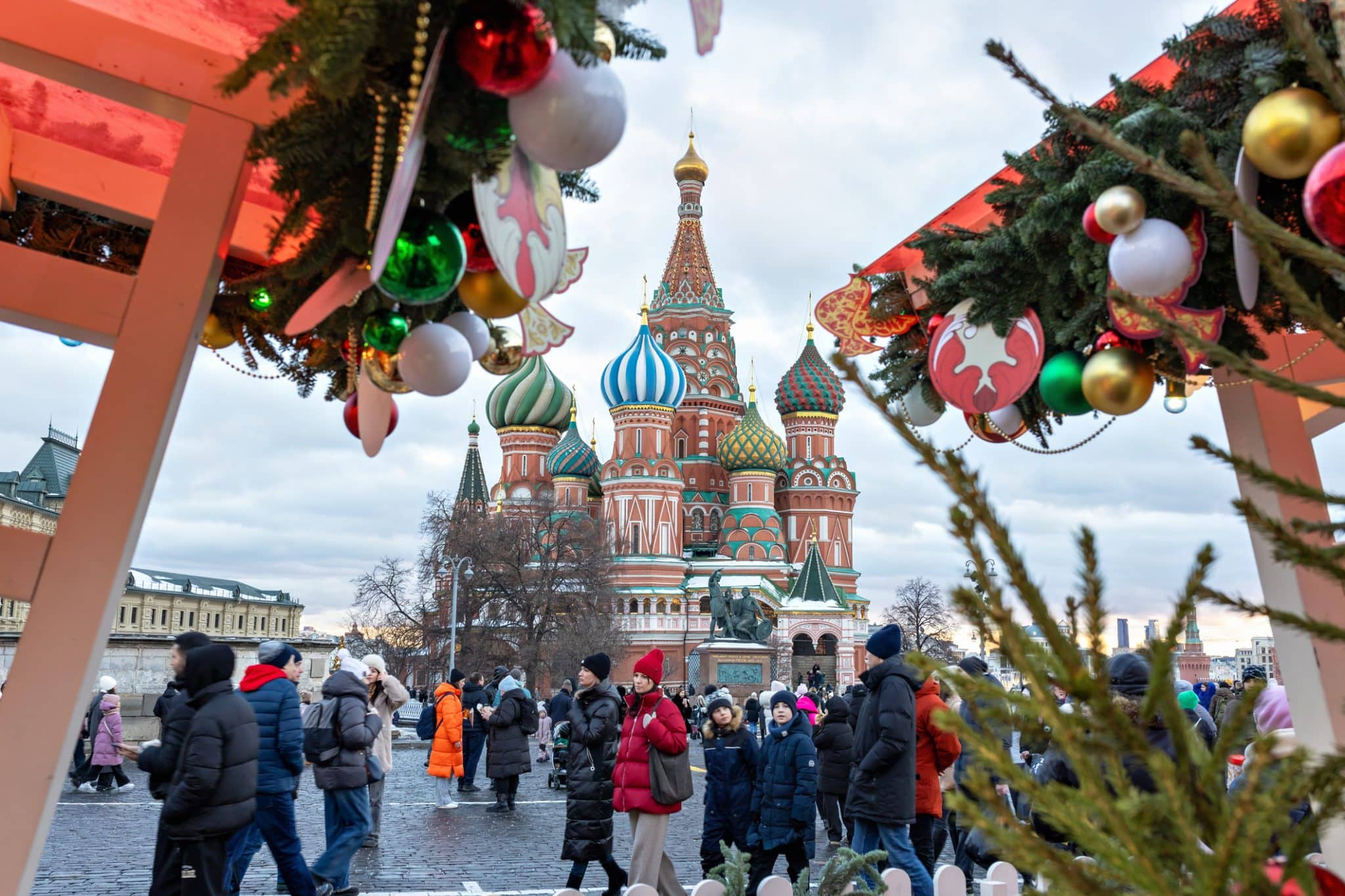
Russian Holidays 2026: A Complete Guide
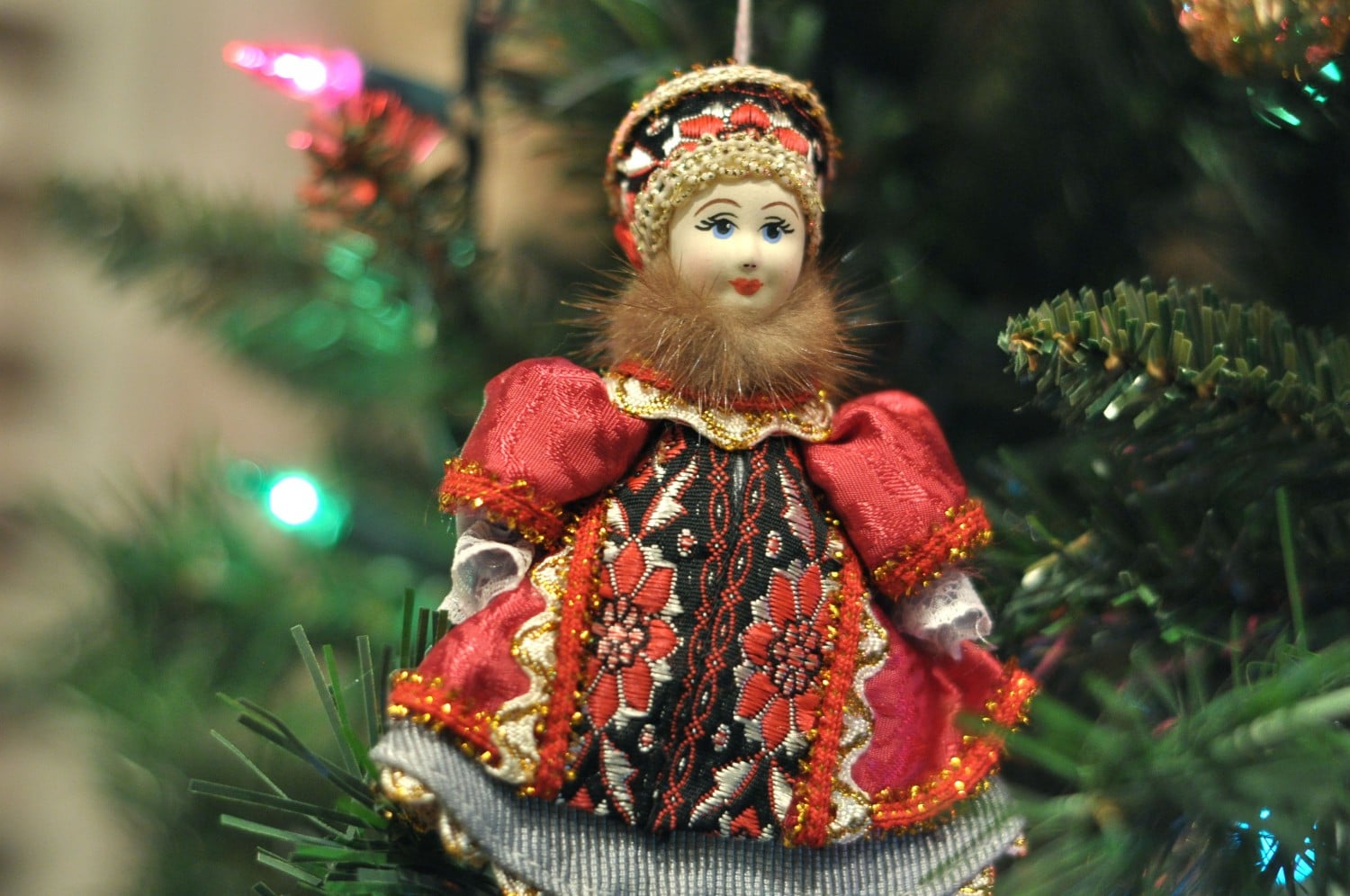
A History of Russian Holiday Ornaments

New Year Holiday Celebrations: Vocabulary and History
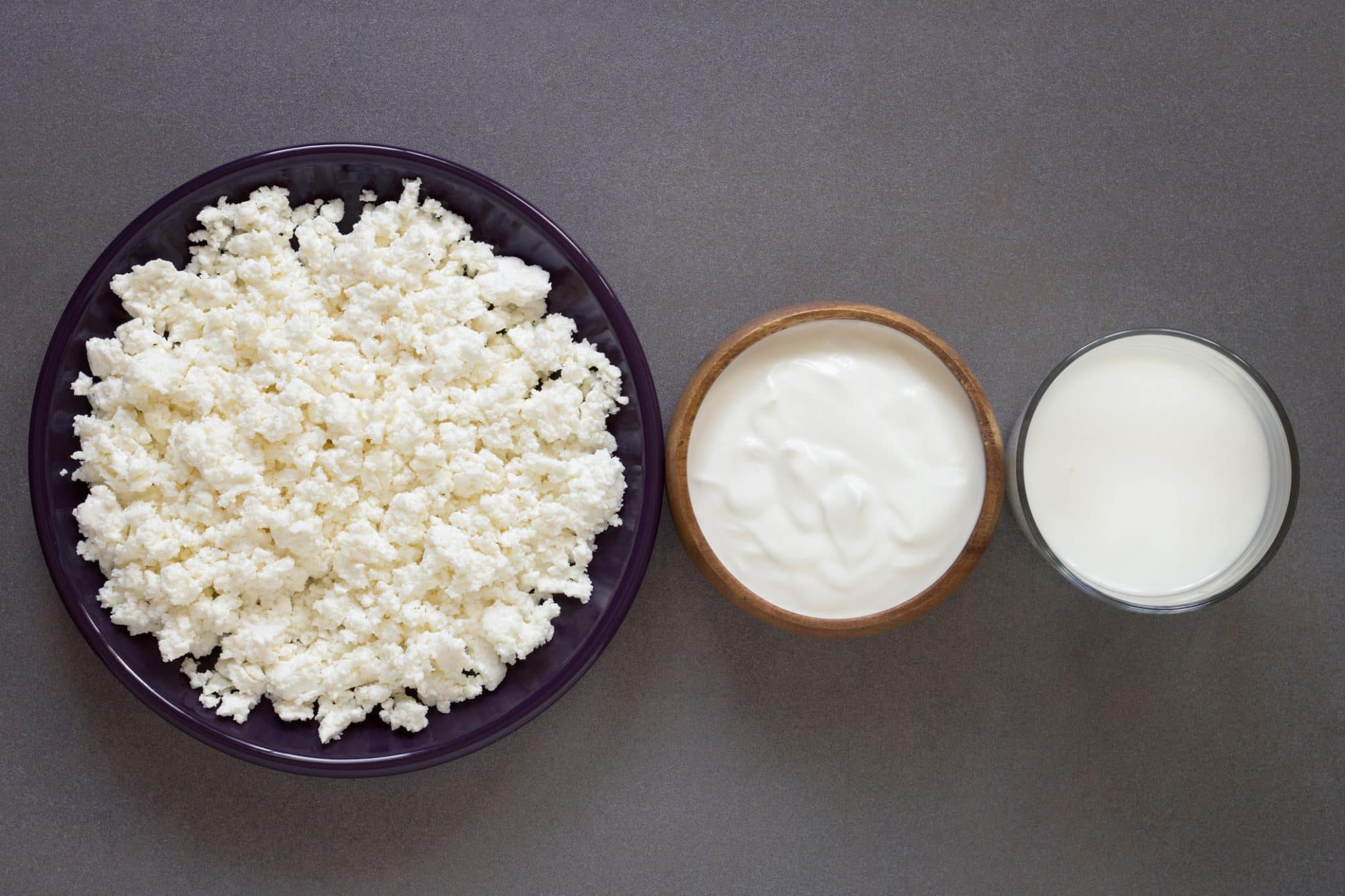
The SRAS Guide to Fermented Milk

